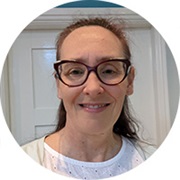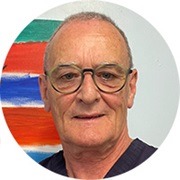- OT
- Life in practice
- Practitioner stories
- “Bridging that gap between the hospital, yourself and the patient is vital”
The roundtable
“Bridging that gap between the hospital, yourself and the patient is vital”
In a roundtable discussion, in partnership with SpaMedica, OT asked: how can private providers support optometrists to enhance the patient experience?
In the context of NHS waiting lists, optometrists across the country are increasingly finding that referring patients to private providers for treatment can relieve stress and allow their patients to be seen more quickly than they would be otherwise.

Karen Hunter
Occupation:Senior optometrist at Stotts Opticians, and secretary of Bolton Local Optical Committee
Location:Bury

Stephen Woodhouse
Occupation:Optometrist and director at Woodhouse Opticians
Location:Blackpool

Sarah-Jane Smith
Occupation:Optometrist and owner of Long Stratton Eyecare.
Location:Norwich
A two-way referral process
At Stotts Opticians, Karen Hunter has been referring to commissioned NHS service providers, initially to SpaMedica in Manchester, since around 2015. OT asked what benefits she has found in this approach.“It opens up another avenue for referral, when waiting lists are getting ever-longer, and provides more options for patients,” Hunter explained.
Hunter’s patients often hear on the grapevine about successful operations in certain places and ask whether they can be referred to the same provider, she said, emphasising that this route has allowed for greater patient choice.
“To give patients an option, I think, is brilliant,” she said.
She added: “To open up the referral process hopefully means waiting lists come down, more people can get their surgery, and we can keep happier patients driving longer, and living happier lives – that’s why I started.”
For Stephen Woodhouse, owner of Blackpool’s Woodhouse Opticians, the most important thing about the referral process is also patient choice – although this is not always possible in his local area due to Integrated Care Board procedures. Discussion with the patient to work out what might be best for them is vital, he believes.To give patients an option, I think, is brilliant
In her time referring patients to NHS service providers, Norwich optometrist and owner Sarah-Jane Smith says the most important thing she has learnt is how much detail is required, and how important it is to be able to pass a high level of information to the hospital practitioner who is performing the pre-assessment.
“I try to make sure it will run smoothly: if they have any access issues, if they’re in a wheelchair, if they’re going to be attending with someone, if they’re a bit hard of hearing – the initial communication issues – and make sure there’s enough detail in the referral,” Smith said.
She added: “Sometimes we don’t always get a lot of time to write letters, and possibly things do get skipped. But if we’re referring someone for a myopic shift, it’s helpful to tell them what it was, what it has moved to, and whether this is the first or second occurrence.”
Making the provider aware of any underlying pathology and if the patient has certain expectations is also key, she said, because “it allows them to confirm and elaborate on what has already been discussed. The patient also has a head start to think about what they’re going to be asked. It is a few bullet points on the key takeaways – anything that might hinder the prognosis and whether I've discussed it, giving as much information as possible.”
When considering feedback on referrals for surgery that has not gone ahead, Hunter emphasised that sometimes there is a duty of care to a patient who is insistent that they want to have their cataracts removed, even if the hospital decides that the operation isn’t needed.
“It’s a hard one for the patient to get their head round,” she said. “We can see the reasons why and we can try and do the best we can with the refraction and with any tints and coatings. It doesn’t alter the fact that the patient is having a real problem with the glare. To a certain extent, it’s a hard conversation to have with the patient, because they’re frustrated, and you can’t do a lot to help.
“But just try as best you can to explain the problems, and go through the risks of cataract surgery. A lot of patients will accept that there are risks involved, and if their vision is pretty good and it is just a bit of glare and they can live with it, a lot will carry on and you’ll see them again in a year.”
She added: “It’s just trying to have those conversations with them, so they understand and appreciate why we can’t go ahead and do their surgery. There’s a vision limit and a cut-off for a reason. They don’t always get it, but it’s just about trying to explain it as best you can.”
Receiving results post-treatment is extremely important, Smith said: “It allows me to track the patient through the process. I always go through what will happen with them, and I tell them that I will get a letter and I’ll know when it [the surgery] is going to go ahead.”
She added: “When we receive a letter back to say that the patient has had the operation, we touch base for a welfare check, which builds into hopefully long-term loyalty to my practice, but also allows us to get them booked in for their post-op check. It bridges that gap.”
This back-and-forth communication helps patients feel supported throughout the process, Smith said.
OT is interested in hearing the practitioners’ perspectives on how information is shared between professionals who are looking after the same patient – ie, between the hospital and the practice.
Hunter believes that “bridging that gap between the hospital, yourself and the patient is vital.”
If hospitals haven’t kept the referring optometrist in the loop they can be left on the backfoot when patients ask questions, she said.
The two-way communication is something that all the practitioners find vital to the process.
In terms of SpaMedica’s communication process, Woodhouse emphasised that “for me, it couldn’t be better. We’ve got complete access, and nobody thinks we’re mad for following up and asking questions.”
When we receive a letter back to say that the patient has had the operation, we touch base for a welfare check, which builds into hopefully long-term loyalty to my practice, but also allows us to get them booked in for their post-op check
Match-fit for surgery
Community optometrists who refer patients into secondary care can play a key role in ensuring that they have the best outcomes throughout their referral and surgery journeys. So, how can the optometrist ensure that the patient’s eyes are ready for treatment? What happens when a patient has two conditions – for example, dry eye and cataracts? And how do practitioners explain that the health of a patient’s eyes will play a role in their surgery outcomes?
Smith explains that outlining what the referral includes and breaking down the clinical reasons for certain things – for example, why a patient might need to use eye drops even if their eyes do not feel particularly dry – is helpful in managing compliance.
“It’s about setting their expectations and telling them that, ultimately, if they do what they’ve been told, it will make their overall clinical procedure much more successful and more comfortable,” she said.
It is important to also emphasise this to anyone who might have brought the patient to the appointment and might be taking them home, Smith said.
She added: “If they can get used to handling and putting drops in before they have the surgery, then when they have the additional drugs afterwards that’s just something else to add into the routine that they’ve already got going.”
Hunter emphasised that compliance for treatment can involve trial and error, and that explaining this to the patient can be helpful – even if some of the drops miss their eye, some will go in – so they are encouraged to practice and not put off if things do not go right the first time.
Hunter practises inserting drops with patients in order to increase their confidence, and has tried to source applicators, but says they are often difficult to get hold of. Some patients struggle with traditional bottles and those with pumps can help, she said.
“It’s just stressing to the patient how important it is to get the drops in, so that they don’t run into problems with inflammation or uveitis. It's [about] trying to make sure that they get on and do it,” she added.
What processes and procedures do the practitioners have in place to ensure their patients receive the right communication from the right place at the right time, pre-surgery?
Smith emphasised that her practice is always on hand to answer questions or communicate with the provider if needed ahead of or after the pre-op assessment. She ensures that they know how to get in touch with the provider directly – and that it is fine for them to do that – and what to expect if they do.
“I try and guide them, but the bottom line is, if they have any questions, come to us,” she said. “We are there. We’ve got their history, they are our patient, and we’ve referred them on for that care. We are there to bridge the gap if there are any questions or queries.”
She added: “Certainly pre-surgery, I’ll try and deal with as much as I can.”
If there are any particular concerns she will contact the provider’s local representative, she said, adding that “as long as the patient’s concerns are addressed, they don’t really mind who is providing that information.”
Hunter agrees: “Forging really good relationships with the treatment centres is key for us, and also getting information back from them. It’s a two-way street.”
As their surgery date approaches, Woodhouse believes most of his patients would be comfortable contacting the surgery provider themselves – but he is also more than happy to pick up the conversation if needed. “The bottom line is that we’re always happy to talk to our patients,” he said. “There is no limit for them getting in touch with us.”
The bottom line is that we’re always happy to talk to our patients. There is no limit for them getting in touch with us
Management in the community
Post-surgery, how do the practitioners welcome patients back into practice – and has that journey been consciously developed?
“You want your patient to come back so that you've got that onward care going forward,” Hunter said.
She added: “You want to touch base with the patient as soon as possible after their surgery, to make sure everything is alright, and to forge that communication with them, so that if they have got any problems, they come back to you.”
Hunter proactively reaches out to the patient as soon as the practice receives the letter or Opera notification saying that the surgery is complete, although sometimes a patient will get in contact before the practice is notified. A post-op check is then booked in.
“Patients are aware that they’re coming back to us,” Hunter said. “I’ve already put that forward. It encourages patient loyalty. You want to look after your patients; you want them back. So, the sooner you can contact them, the better.”
Smith emphasises to patients that what they are experiencing – gritty or itchy eyes, for example – is normal, especially if they are particularly anxious. She will wait until problems such as these are resolved before discussing whether they need new glasses or if they should be referred for the second eye.You want your patient to come back so that you've got that onward care going forward
“It’s just about being clear, and repeating the advice,” she said. “I always make a point of telling the patient that the results I get during the post-operative check are uploaded and sent back to the surgeon. I make it clear to the patient that that communication is there, and if there are any concerns, I will fill that in and that will be flagged, and we’ll go from there.”
It is vital to be aware that surgery is an emotional thing for patients, even though optometrists see it every day, Smith added: “it’s their eyes.”
Hunter revealed that being able to phone the provider’s clinical triage team helps her to avoid unnecessary referrals and assists in her ability to work out whether something should be monitored or actioned.
“Having the communication link where we can ring up and speak to the clinical triage helps enormously,” she said.
Smith agreed that this has bolstered her confidence in knowing what she can deal with herself in the future.
In referring patients back to secondary care after surgery, Hunter emphasises that positive relationships can be hugely helpful – as well as clear communication with the patient over what the issue is, and why they need to be referred back to the hospital.
She is also on hand to follow up if the patient doesn’t hear back from the hospital directly, she explained.
“I’ve got really good links with the hospitals, so I’m quite good at getting information to them and information back,” Hunter said. “It’s about having that communication link, and I think it’s important that we make the effort to make that link. I know it’s hard; hospitals are busy. You don’t always get the same rapport with a big hospital as you do with a smaller local provider.”
She added: “But I think the better communication you have with the hospital, the better service you can provide to your patients, and your communication outcomes will be far better.”



Comments (0)
You must be logged in to join the discussion. Log in